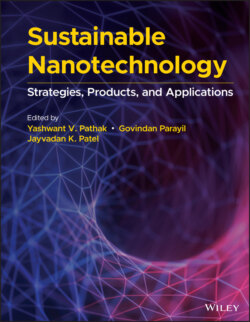Читать книгу Sustainable Nanotechnology - Группа авторов - Страница 25
1.3.1 Fertilizers
ОглавлениеChemical‐based conventional fertilizers may have worked previously but have been deemed unsustainable since the beginning of the green revolution [71]. Current fertilizers cause a loss of nutrients. Nitrogen is an essential mineral required for the growth of crops. It is lost through processes of nitrate leaching, denitrification, and ammonia volatilization. This loss of nitrogen not only affects plant growth but also contributes to pollution, global warming, and causes a huge economic loss [72]. This and other problematic results of conventional fertilizers can be prevented by using nanofertilizers. Nanofertilizers can enhance nutrient use efficiency by causing a higher uptake of nutrients. This is accomplished by the smaller surface area of nanomaterials, which is known to increase the nutrient surface interaction. Nanomaterials can also be used to enhance the results of conventional fertilizers. Slow‐release chemical‐based fertilizers, for example, can be coated with nanoparticles and significantly reduce the results of nitrate leaching and denitrification [73]. Compared to conventional fertilizers, nanofertilizers have many advantages. Where conventional fertilizers work rapidly, nanofertilizers feed the crops gradually in a controlled manner. They are highly effective in nutrient absorption by plants and result in a lower loss of essential nutrients. This is due to their nanosized pores and their ability to utilize various ion channels within the plants. In addition, polymer‐coated fertilizers are able to avoid contact with the soil and water due to the coating encapsulating the nanoparticles. This ensures that the nutrients and minerals are available for the plant to uptake when it is ready to do so. This also minimizes the unnecessary loss of nutrients [74].
